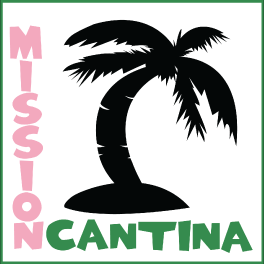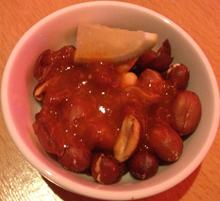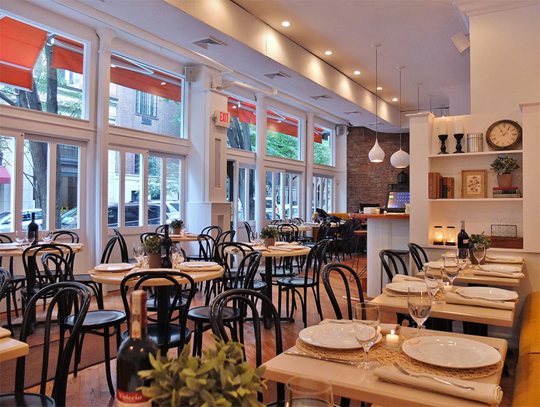
Note: Cuciana Ciano closed in August 2014 due to a dispute with the landlord. The space is expected to become a French restaurant called Monte Carlo.
*
 Remember Pan Am, the airline? After it folded in 1991, it was resuscitated six times, in each instance having nothing whatsoever to do with the original, aside from the name.
Remember Pan Am, the airline? After it folded in 1991, it was resuscitated six times, in each instance having nothing whatsoever to do with the original, aside from the name.
This is the comparison that comes to mind when you visit Cucina Ciano on the Upper East Side, which shares ownership and a name—but little else—in common with Ciano, which failed nobly after a three-year run in the Flatiron District.
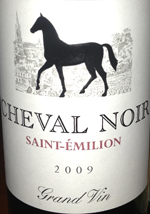 The chef at Ciano was Shea Gallante, who came thisclose to earning four stars at Cru, and was very close to three at Ciano. The food and the setting were refined, in a way few new restaurants are any more: the perfect second- or third-date restaurant.
The chef at Ciano was Shea Gallante, who came thisclose to earning four stars at Cru, and was very close to three at Ciano. The food and the setting were refined, in a way few new restaurants are any more: the perfect second- or third-date restaurant.
The impressive wine program, with former Cru sommelier John Slover in charge, offered most of the list by the half-bottle for 50 percent of the full bottle price. Even if the food had been merely average (and it wasn’t), Ciano was worth repeated visits for the wine alone.
Ciano closed abruptly in April 2013 for unspecified reasons, although I had long suspected that the upscale Italian restaurant market segment was over-saturated, which turned out to be the case.
Owner Stratis Morfogen transported the name and one of Shea Gallante’s sous chefs, Tim Huynh, way uptown. But he brought little else that had made Ciano the charming place it was. A loud, hectic scrum greets you at the door. Tables are crushed close together. The space is not at all pleasant.
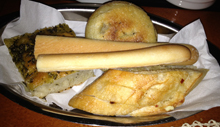 The mostly-Italian, two-page wine list has very few of the unusual selections that would bring you back, and they’re no longer available by the half-bottle.
The mostly-Italian, two-page wine list has very few of the unusual selections that would bring you back, and they’re no longer available by the half-bottle.
We ordered two of the house cocktails. and in both cases the bar was out of a main ingredient. They’re served in mugs the size of water goblets, and with so much ice that they quickly become diluted.
The food isn’t memorable. If I lived in the neighborhood, I’d wait a few months until the crowds die down, and give it another try to see if the chef has his act together. Right now, it is uneven. Prices are lower than at the original Ciano, with primi $10–19, pastas $14–18 for half portions, $24–25 for entrée portions, secondi $24–42, and side dishes $8. That’s the going rate in this part of town.
The bread service (above right) looks impressive, but bread sticks and focaccia were both stale; the warm garlic bread was pretty good, though.
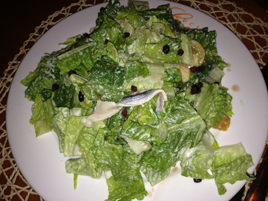
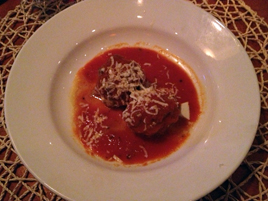
A mediocre Caesar Salad ($12; above left) was under-dressed and featured but one measly anchovy. The bartender recommended the Veal Meatballs ($16; above right), a wise choice. They’re a bit expensive for what you get, but at least the dish is well made.
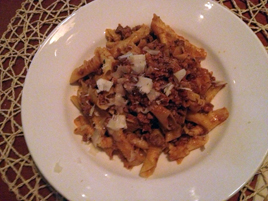
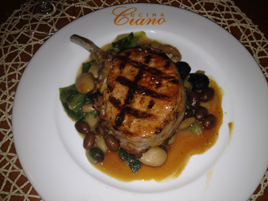
Wendy gave her endorsement to the Garganelli with Duck Bolognese (above left). She ordered the half-portion ($15), and it was ample. The Pork Chop with a honey glaze ($29; above right) was a hair over-done, but I finished it nonetheless.
It’s understandable that Cucina Ciano is less ambitious than Ciano. When an upscale place fails, its replacement is usually more casual. But no one who admired the original Ciano should be misled. Very little of what made it special has survived the trip uptown. It’s still a decent neighborhood spot, and right now the local crowd is keeping it full. If I lived in the neighborhood, I’d give it three months and then go back, hoping to find it less hectic.
Cucina Ciano (181 E. 78th St. btwn Third & Lexington Avenues, Upper East Side)
Food: At its best, slightly better than neighborhood Italian
Service: Fine, considering the crowds
Ambiance: A loud, bustling room
Rating: ★
 Tuesday, December 24, 2013 at 05:02PM
Tuesday, December 24, 2013 at 05:02PM 
 I’ve never built or run a restaurant, but I’m gonna go out on a limb, and give some advice: don’t tell the press that you’re building a new Balthazar or Elaine’s. Those two places are too iconic – too legendary –to be copied. The attempt is bound to seem pale by comparison.
I’ve never built or run a restaurant, but I’m gonna go out on a limb, and give some advice: don’t tell the press that you’re building a new Balthazar or Elaine’s. Those two places are too iconic – too legendary –to be copied. The attempt is bound to seem pale by comparison.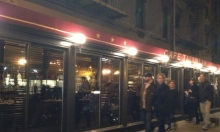 That’s exactly what Greg Hunt, owner of Cafe Tallulah on the Upper West Side, did. Florence Fabricant of The Times duly reported it. Hunt hired Roxanne Spruance, a sous chef from Blue Hill Stone Barns (and previously WD~50) to run the kitchen. An Employees Only alumnus was in charge of the cocktails. With that background, the critics were sure to turn up, right?
That’s exactly what Greg Hunt, owner of Cafe Tallulah on the Upper West Side, did. Florence Fabricant of The Times duly reported it. Hunt hired Roxanne Spruance, a sous chef from Blue Hill Stone Barns (and previously WD~50) to run the kitchen. An Employees Only alumnus was in charge of the cocktails. With that background, the critics were sure to turn up, right?

